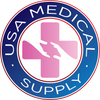A Buyer's Guide to Choosing Nitrile Gloves
Do you plan on buying nitrile gloves? Well, you are in the right place. This guide will help you make the best glove selection that suits your need.
Nitrile gloves are the best choice for you. Nitrile gloves are made from nitrile-butadiene rubber, meaning there’s no risk of triggering a latex allergy. They offer up to three times the protection that latex gloves do. These disposable gloves are popular for their superior strength, durability, sensitivity, high resistance to oils and aqueous chemicals, and dexterity. For these reasons, nitrile gloves are now the most used type of gloves (you can find them in the dental, medical, domestic, food, and automotive industries), and there's no sign of them going down.
When buying, these are some of the things that you consider:
What is the purpose of your gloves?
The purpose of your gloves determines your category choice. There are two basic categories of nitrile gloves; the medical or industrial grade. Here's what they are suited for.
The medical-grade.
The medical-grade of nitrile gloves are made and carefully tested to meet the FDA approval. Because of the sensitivity healthcare, nitrile gloves are made more robust to reduce the risk of getting in contact with environmental contaminants or blood-borne pathogens.
Nitrile gloves are also used in hospitals because there is no risk of triggering latex allergies. So doctors, dentists, and other medical or healthcare personnel don't have to worry about the allergic reactions of latex.
The industrial-grade.
Industrial-grade nitrile gloves are best for situations or work that involves handling harsh/corrosive chemicals and solvents. The industrial-grade of nitrile gloves offer superior puncture and chemical resistance. For this reason, they are most suited for cleaning purposes, mechanic or automotive industries, food service, and any industry related to chemical safety.
What is your preferred glove size?
Glove size matters a lot. The comfort of a well-fitting glove enriches your glove experience and makes working easier. The right size increases your level of efficiency and effectiveness in operating a task.
Manufacturers have different sizing standards. One manufacturer’s small size could be another’s medium size. To get the right size, try as many sample sizes as possible until you get gloves that fit your hands perfectly.
The right glove should not be too stiff or too tight. It should comfortably stretch over your hands, giving you the much-needed dexterity. To get the correct glove size, measure the glove length and width with your finger length and width.
What color suits your purpose best?
Color choice is vital when it comes to choosing suitable gloves. Color gives visual cues.
In medicine/ health care, color-coded gloves are used to differentiate between latex and nitrile gloves. Blue is the standard color for healthcare nitrile gloves. Black is used in automotive industries. In the food industry, color-coded gloves prevent cross-contamination of raw and cooked food during food handling.
Brighter-colored nitrile gloves increase safety compliance. Here's how. When you put on a double layer of nitrile gloves for double protection, the inside layer should be a brighter color like pink or orange. In case of a tear or puncture in the outer glove, you can easily spot the breach.
Color coding also helps you separate different glove sizes and cross-contamination. When buying different sizes of gloves, each size should have its own color to differentiate it from the other sizes.
Powdered or powder-free nitrile gloves?
Manufacturers usually make two types of nitrile gloves; powdered and powder-free nitrile gloves.
Powdered nitrile gloves have powder on their inner coating. The powder absorbs any moisture in the gloves. This makes the gloves more comfortable (smooth), easy to wear, and easy to remove. But because of the fragility of the healthcare industry, powder-free nitrile gloves are preferred. The powder causes contamination and air-borne allergies in workplaces.
To ensure that you get powder-free nitrile gloves, order directly from a reliable nitrile glove supplier.
What is your preferred texture and finish?
A good grip improves work performance. If your work requires a better grip, then buy textured nitrile gloves. Gloves with textured fingertips or palms give a better grip and are easier to put on or wear.
With a textured finish, you are assured of having a good grip in all conditions, wet and dry.
The grip is not entirely dependent on the texture of the glove. Some manufactures improve glove grip by using less chlorine (during the chlorination process).
What is your preferred glove thickness?
Thin or thick gloves? The answer depends on the use.
Thinner gloves are more stretchable, more comfortable, and have more sensitivity. They help you complete detailed and quick tasks with ease.
Thick gloves offer more protection. The thick material increases resistance to chemical exposure, tears, and punctures. This makes them the ideal choice for healthcare/medical and industrial purposes.
Endnote.
At the end of it all, nitrile is the best glove choice. It gives you the best value for money. Nitrile gloves are affordable, comfortable even when worn for long hours, great heat dissipaters, and give your hands the best protection from harmful substance exposure. Get yourself some nitrile gloves.

